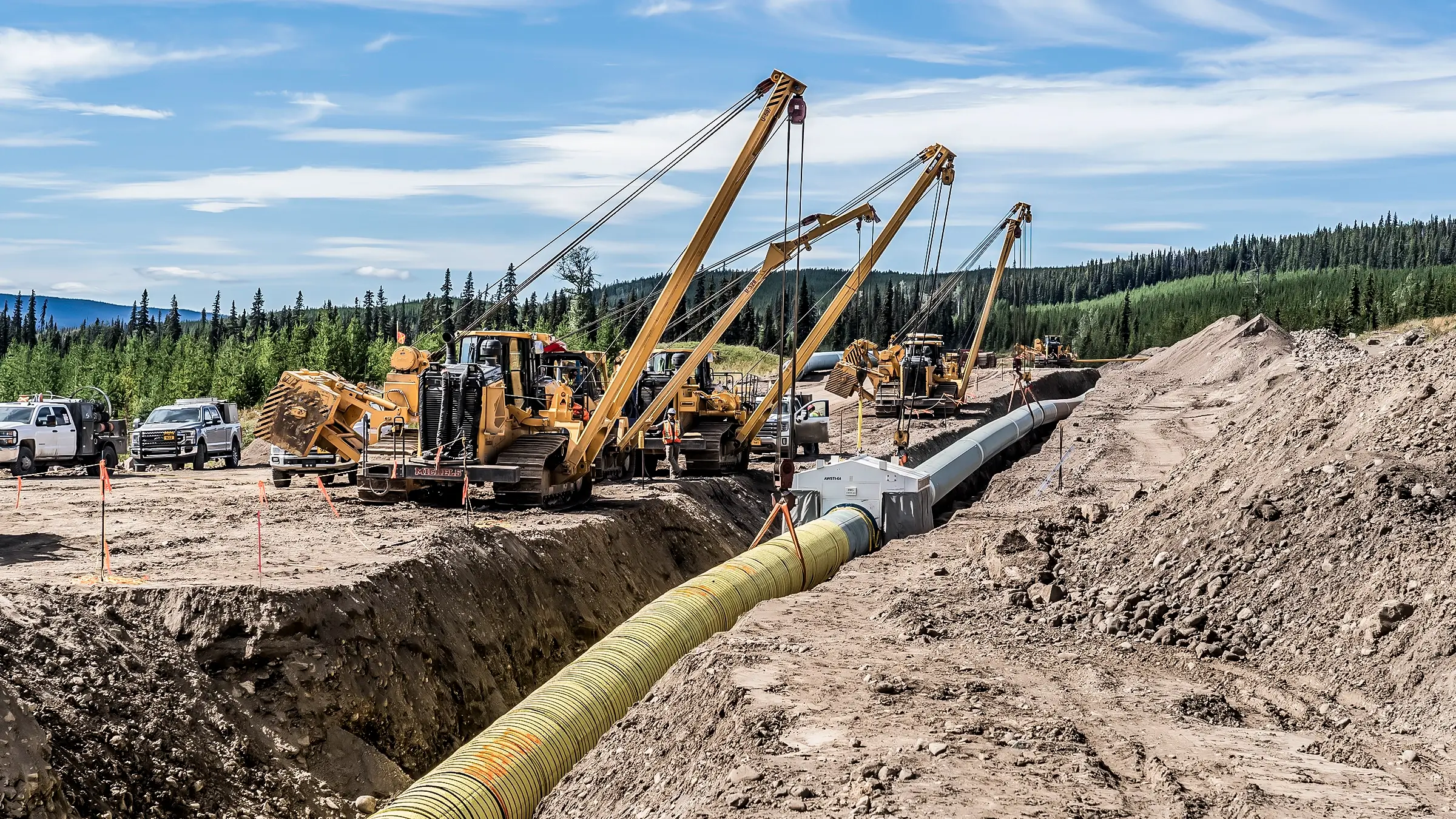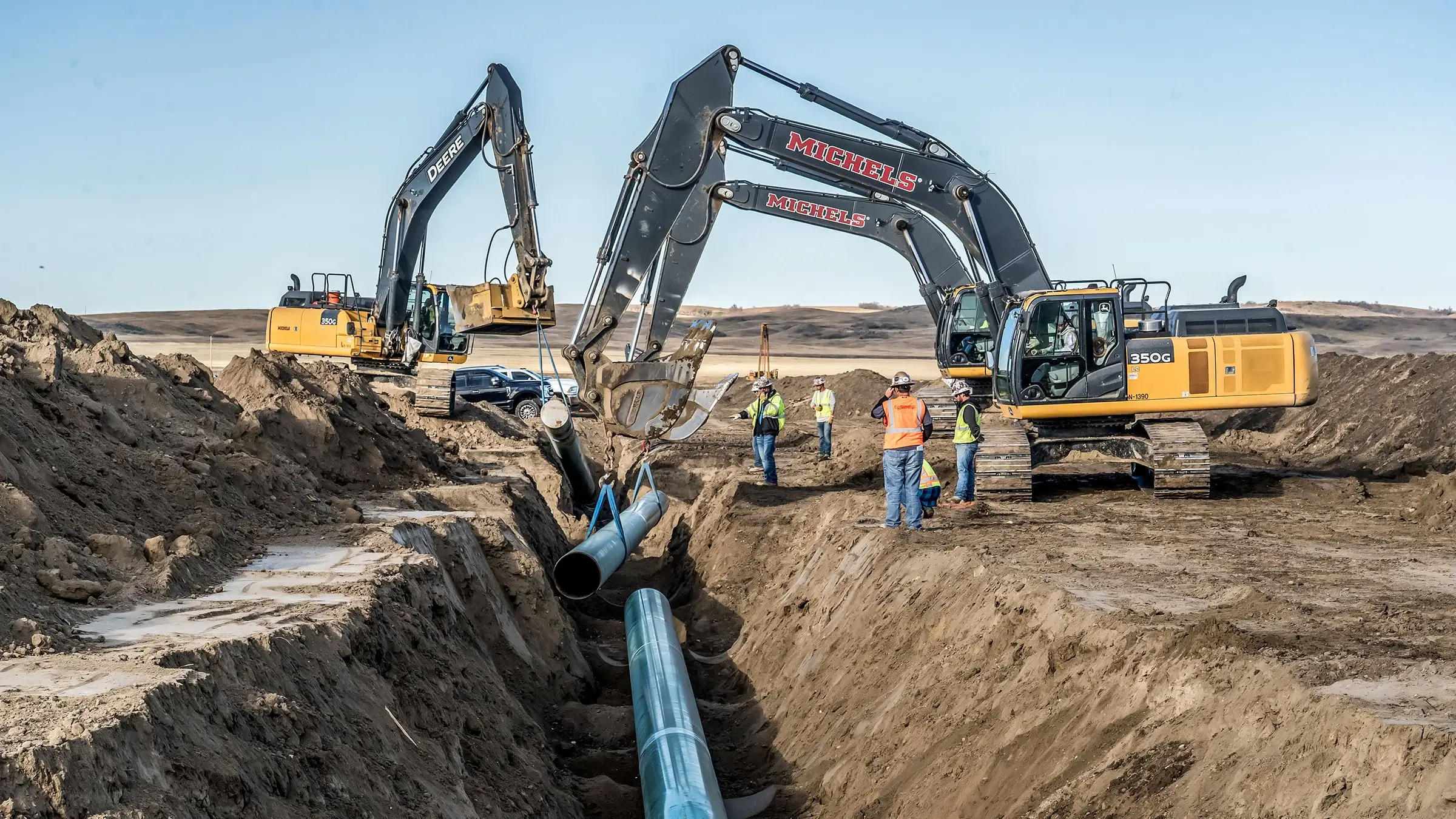Workforce Growth Enabled by Pipeline Construction Authority
Exploring the Future of Pipeline Construction: Trends and Technologies to Enjoy
The pipiline construction sector gets on the verge of substantial development, driven by advancements in materials, automation, and sustainability methods. With the intro of innovative composite materials and the combination of robotic technologies, projects are coming to be not just more efficient yet additionally more secure and eco responsible. In addition, clever surveillance systems are readied to transform upkeep methods through real-time data analytics. As these patterns unfold, the implications for regulatory conformity and sector requirements become increasingly essential. What continues to be to be seen is just how these advancements will certainly reshape the landscape of pipiline construction in the coming years.
Emerging Materials in Pipeline Construction
Current improvements in pipiline construction have actually emphasized the relevance of ingenious products that improve toughness and effectiveness. The sector has increasingly transformed to composite products, such as fiberglass enhanced plastic (FRP) and carbon fiber, as a result of their exceptional strength-to-weight proportions and resistance to deterioration. These materials substantially prolong the life expectancy of pipelines, minimizing the requirement for frequent upkeep and substitute, which can be both costly and disruptive.Another impressive advancement is making use of high-density polyethylene (HDPE), which has actually acquired grip for its flexibility and resistance to splitting and environmental stress. HDPE pipelines are especially advantageous in applications where ground motion postures a risk, as they can hold up against significant contortion consistently. Additionally, the lightweight nature of HDPE helps with less complicated transportation and installation, even more boosting project efficiency. Pipeline Construction Authority.Moreover, improvements in nanotechnology have actually led the way for the creation of materials with enhanced buildings. Incorporating nanoparticles right into traditional polymers or metals can improve stamina, minimize weight, and also impart self-healing capabilities, significantly enhancing the long life of pipiline systems.Lastly, the integration of clever products, which can react to environmental adjustments, stands for a frontier in pipiline construction. These products can check anxiety and deterioration in real-time, permitting for proactive maintenance and reducing the likelihood of catastrophic failures
Automation and Robotics in Construction
In an era where effectiveness and accuracy are vital, the assimilation of automation and robotics in pipiline construction is changing industry practices. This technological improvement is positioned to enhance efficiency while reducing human error, therefore dealing with several of the longstanding challenges in this sector.Robotic systems are increasingly utilized for tasks such as welding, assessment, and excavation. Midland Pipeline Construction Authority. These makers can operate in hazardous environments where human existence may be dangerous, thereby safeguarding employee wellness and safety. Furthermore, automated welding robotics guarantee constant high quality and reduce the probability of issues, which can have considerable economic implications.Drones are another crucial part of this transformation. They are used for airborne surveying and mapping, supplying real-time information that can inform project preparation and execution. This capacity makes it possible for project supervisors to make educated decisions quickly, enhancing resource allowance and decreasing delays.Furthermore, making use of automation in pipiline construction enables raised accuracy in tasks such as pipe positioning and installment. This level of accuracy not only improves the honesty of the pipiline system but additionally decreases the need for expensive rework.As the market continues to accept these technologies, the capacity for boosted effectiveness and minimized functional prices becomes noticeable. The action in the direction of automation and robotics is not just a fad but a strategic action to the evolving demands of pipiline construction, establishing a new standard for future projects. The recurring development in this field will certainly form the landscape of construction, driving development and competitive advantage
Smart Checking Technologies
The landscape of pipiline construction is increasingly being formed by wise monitoring innovations that improve operational oversight and upkeep performance. These innovative systems utilize a combination of sensors, data analytics, and real-time interaction to provide complete insights into pipiline conditions, making it possible for operators to make enlightened decisions quickly.One of the essential elements of smart surveillance modern technologies is the release of Internet of Things (IoT) sensing units along pipiline networks. These sensors constantly collect information on different criteria, including stress, temperature level, and circulation rates. By leveraging this data, operators can determine anomalies that may suggest potential leaks or other concerns, enabling prompt interventions that prevent pricey failings and environmental damage.Moreover, the integration of machine knowing formulas into keeping track of systems allows for anticipating upkeep strategies. By assessing historical information and identifying patterns, these algorithms can anticipate potential devices failings before they happen, considerably reducing downtime and repair costs. Furthermore, cloud-based systems facilitate the centralized storage and evaluation of data, making it accessible to stakeholders despite location.Furthermore, wise monitoring innovations can enhance safety protocols by offering real-time informs to drivers pertaining to unsafe conditions. This positive strategy not just safeguards personnel yet likewise guarantees compliance with governing standards.
Sustainable Practices and Materials
As the pipiline construction industry advances, the consolidation of environment-friendly materials has emerged as an essential emphasis for reducing environmental effect. Developments in sustainable materials not only enhance structural stability however likewise contribute to reducing the total carbon impact of pipiline projects. By focusing on these techniques, firms can straighten with this hyperlink worldwide sustainability objectives while keeping functional performance.
Eco-Friendly Products Innovations
Innovations in environment-friendly materials are changing pipiline construction, cultivating sustainable practices that reduce environmental influence. As the industry faces enhancing stress to decrease its environmental footprint, products such as bio-based plastics, recycled steels, and composite products are acquiring grip. These choices not only provide resilience and strength but additionally substantially reduce reliance on fossil fuels.Bio-based plastics, derived from renewable energies, offer a lasting option for pipiline coatings and linings, boosting resistance to corrosion and chemical damages. Recycled steels, sourced from deactivated pipelines and various other infrastructure, contribute to a circular economic situation by reducing waste and saving natural deposits. Advanced composite materials, which combine fibers and materials, offer a lightweight yet durable service, lowering transportation discharges and facilitating much easier installation.Additionally, developments in finishes that use non-toxic, ecologically friendly materials are likewise enhancing the sustainability of pipiline construction. These advancements not just safeguard pipelines from ecological threats but additionally minimize contamination risks throughout procedures. By accepting these eco-friendly materials, the pipiline construction field is taking substantial strides toward a more sustainable future while dealing with the pressing difficulties presented by environment change and resource deficiency.
Reducing Carbon Footprint
Emphasizing lasting techniques and products is crucial for pipiline construction to effectively decrease its carbon impact. The sector is increasingly embracing ingenious techniques that prioritize environmental stewardship while keeping functional performance. One significant trend is the usage of low-carbon materials, such as recycled steel and bio-based polymers, which not just lessen greenhouse gas emissions during production yet also enhance the toughness of pipelines.Additionally, progressed construction strategies, consisting of modular construction and prefabrication, simplify the structure procedure, consequently minimizing waste and power consumption. Implementing electronic technologies like developing details modeling (BIM) enables even more exact job planning and source allocation, more mitigating ecological impacts.Moreover, pipiline operators are checking out renewable resource sources for operational power, lowering reliance on nonrenewable fuel sources. The combination of carbon capture and storage space (CCS) innovations is also obtaining grip, giving a method to offset exhausts related to pipiline operations.Ultimately, the commitment to lasting practices in pipiline construction not only addresses governing demands however likewise reacts to expanding public demand for environmentally liable infrastructure. By adopting these practices, the industry can lead the means towards a more lasting future while guaranteeing the honesty and performance of pipiline systems.
Digital and Simulation
While the construction industry has generally relied on physical versions and hands-on procedures, the appearance of electronic twins and simulation innovations has changed job planning and implementation. Digital doubles are virtual reproductions of More hints physical properties that incorporate real-time information, enabling stakeholders to picture and manage pipiline jobs better. By creating a detailed electronic version, task groups can assess performance, predict results, and make educated choices throughout the construction lifecycle.Simulation modern technologies even more improve this process by allowing groups to evaluate numerous circumstances and evaluate their prospective effects prior to execution. This ability is specifically crucial in pipiline construction, where environmental problems, governing requirements, and logistical difficulties can greatly affect project timelines and prices. By mimicing different scenarios, engineers can recognize excellent construction approaches, resource allocations, and routines, eventually reducing dangers and enhancing efficiency.Additionally, digital doubles promote improved collaboration amongst task stakeholders. As info is constantly upgraded in real-time, all involved events have accessibility to the very same data, cultivating openness and making sure placement on task objectives. This smooth assimilation of information can cause quicker decision-making and more active reactions to unanticipated difficulties.
Enhanced Precaution

Regulatory Changes and Compliance
Governing modifications and conformity are crucial elements shaping the landscape of pipiline construction. As environmental issues and public security continue to get importance, regulatory bodies are significantly applying strict standards that regulate every element of pipiline projects (Pipeline Construction Excellence). These regulations encompass a wide variety of aspects, consisting of discharges standards, land usage, and waterway defense, necessitating that firms stay vigilant and adaptable.In recent years, we have seen a significant shift toward extra robust conformity structures. Agencies such as the Pipeline and Hazardous Products Safety Administration (PHMSA) in the United States have actually presented complete laws targeted at minimizing dangers related to pipiline operations. This includes requireds for innovative tracking modern technologies and normal examinations to ensure adherence to safety and security standards. Companies have to invest in training and resources to satisfy these evolving requirements.The worldwide landscape is not static; global agreements and local policies additionally play a role in forming compliance techniques. Business participated in cross-border jobs must browse a complex web of legal obligations that vary from region to region, typically causing raised operational costs and project delays.Furthermore, the pattern in the direction of enhanced openness and public engagement is improving just how business approach pipiline construction. Stakeholder input is now a lot more vital than ever before, requiring companies to be proactive in attending to area concerns associated with environmental influence and safety and security
Regularly Asked Inquiries
What Are the Main Challenges Facing Pipeline Construction Today?

Just How Does Climate Modification Influence Pipeline Construction Practices?
Environment adjustment significantly influences pipiline construction techniques by demanding improved environmental evaluations, boosted governing compliance, and the fostering of durable infrastructure layouts (Midland Pipeline Construction Authority). These adaptations aim to alleviate dangers related to extreme climate occasions and shifting ecological problems

What Functions Do Stakeholders Play in Pipeline Job Development?
Stakeholders in pipiline task growth include governmental companies, environmental companies, neighborhood neighborhoods, and capitalists. Their duties include regulatory compliance, environmental assessments, community engagement, and financial backing, making sure projects straighten with societal requirements and sustainability goals.
Just How Is Public Assumption Influencing Pipeline Construction Projects?

Public assumption considerably influences pipiline construction tasks, as neighborhood concerns pertaining to ecological influence, safety, and economic benefits can result in boosted scrutiny, governing obstacles, and job hold-ups, eventually forming the decision-making processes of stakeholders entailed.
What Is the Future Work Market Overview for Pipeline Construction Professionals?
The future work market for pipiline construction professionals appears appealing, driven by enhancing reference framework investments and technological innovations. Need for proficient labor is anticipated to climb, highlighting the need for training in emerging construction approaches and safety procedures.